Formal Kilt Attire: A Timeless Scottish Tradition
Posted by FAGENT ABRONT

The kilt stands as a powerful symbol of Scottish heritage, embodying centuries of culture, history, and pride. Beyond its significance as a national garment, the kilt has evolved into a statement of formal attire, worn at weddings, formal dinners, and ceremonial events. This article delves into the intricacies of formal kilt attire, exploring the essential components that come together to create an ensemble rich in tradition and elegance.
II. A Full Kilt Outfit - The Basics
At the heart of formal kilt attire is a meticulously assembled ensemble, each element contributing to its overall grace and formality. The traditional outfit consists of the kilt itself, complemented by accessories such as the kilt pin, sporran, a choice between the Prince Charlie or Argyll jacket, a formal shirt, neckwear, kilt hose, garters and flashes, the Sgian-dubh, and Ghillie brogues. Each piece plays a critical role in the outfit's aesthetic, blending functionality with ceremonial significance.
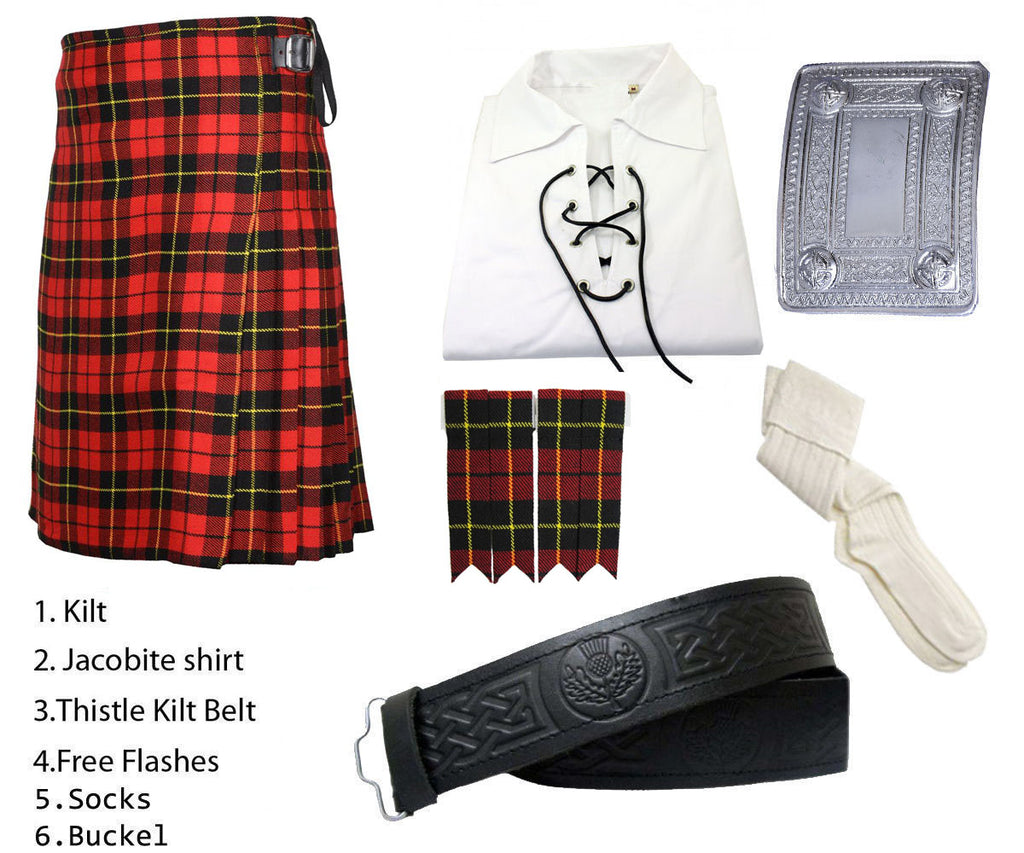
III. Kilt
The kilt, with its deep historical roots, is more than a garment; it's a canvas that narrates the wearer's clan history through its tartan. Kilts come in various styles, including the traditional tartan kilts and utility kilts for modern wearers. The choice of tartan can signify familial lineage or personal preference, each fold and pleat a testament to Scottish craftsmanship.

IV. Kilt Pin
The kilt pin is not merely decorative; it serves the practical purpose of weighing down the kilt's front apron, ensuring it stays in place. Positioned on the lower corner of the outer apron, it subtly complements the tartan's design, often reflecting the wearer's clan emblem or a symbol of personal significance.
V. Sporran
The sporran hangs front and center on the kilt, serving as a traditional pocket where none exist on the kilt itself. From the simple day sporrans to the more elaborate dress sporrans made of fur and metal, the sporran adds a layer of formality and flair, especially in formal settings.
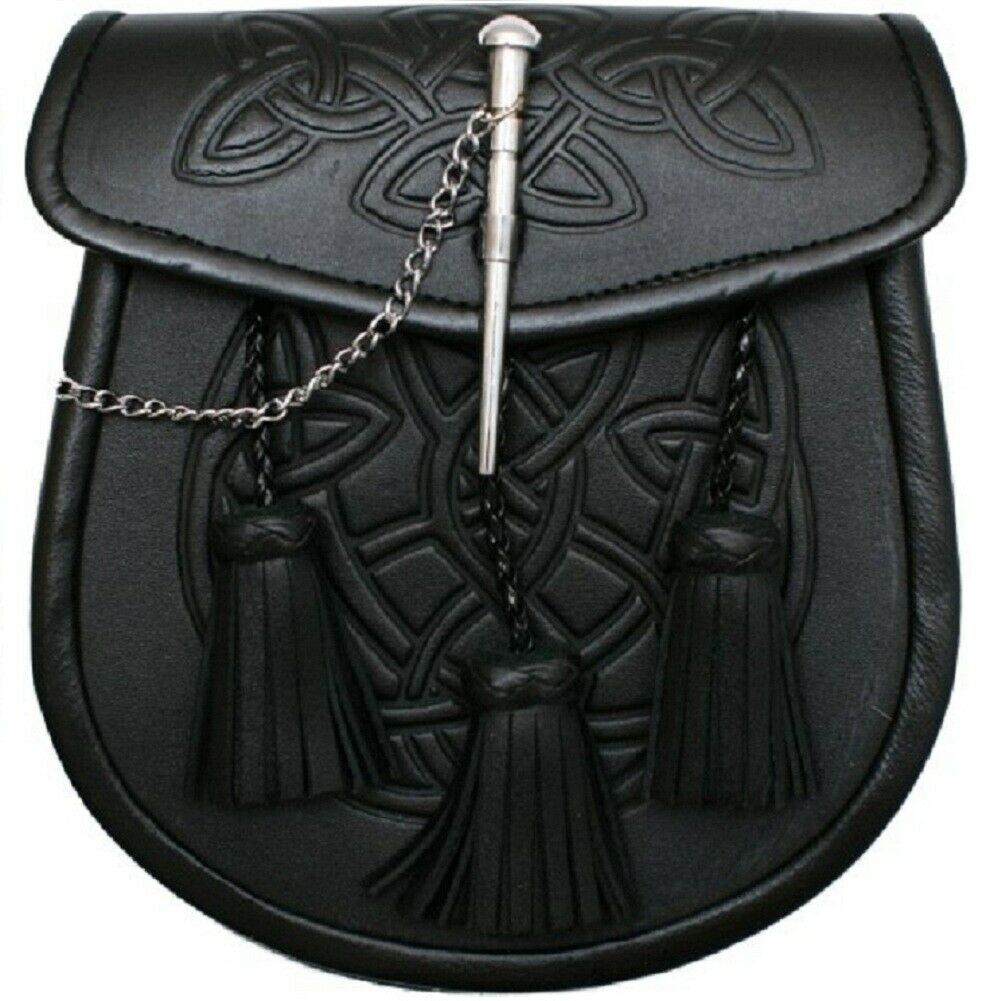
VI. Prince Charlie or Argyll Jacket
The choice between a Prince Charlie and an Argyll jacket hinges on the occasion's formality. The Prince Charlie, with its tailcoat design, is suited for evening events, exuding a high degree of formality. In contrast, the Argyll jacket, with its versatile single-breasted design, is appropriate for both formal and semi-formal occasions.
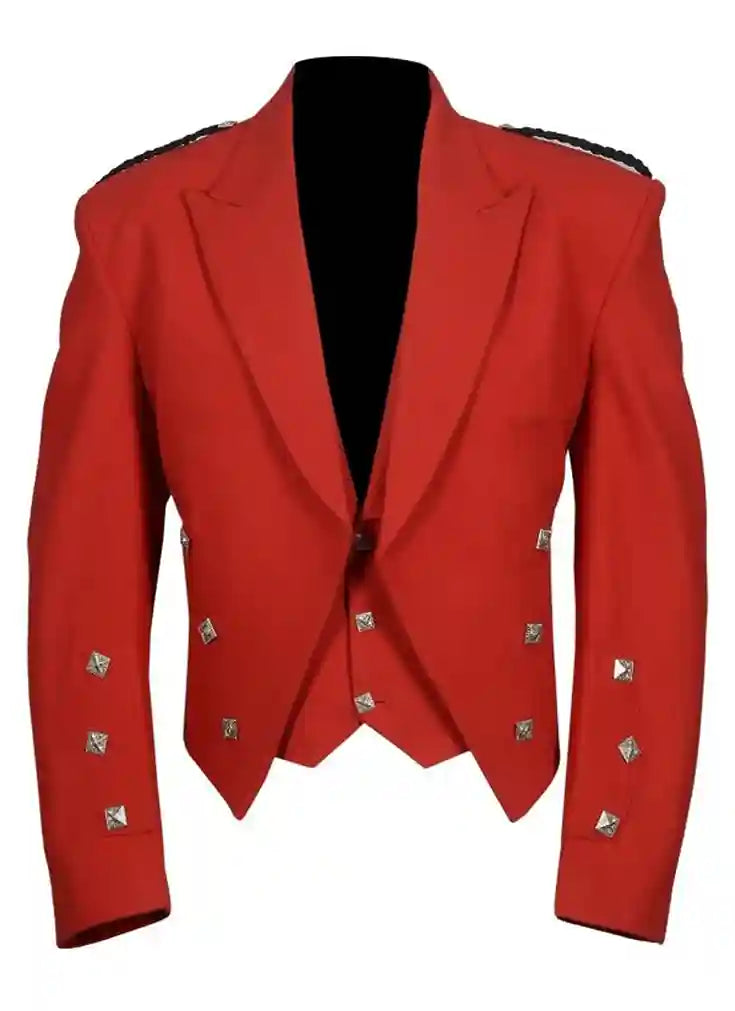
VII. Shirt and Neckwear
A crisp, white dress shirt lays the foundation for the outfit's upper half, paired with formal neckwear such as a bow tie or ruched tie. The choice of neckwear can complement the outfit's overall tone, from solemnity to celebration.
VIII. Kilt Hose
Kilt hose, or socks, extend up the calf and are traditionally matched with the kilt's tartan or in a neutral color that complements the outfit. They offer an opportunity for personal expression through their color and cuff design.
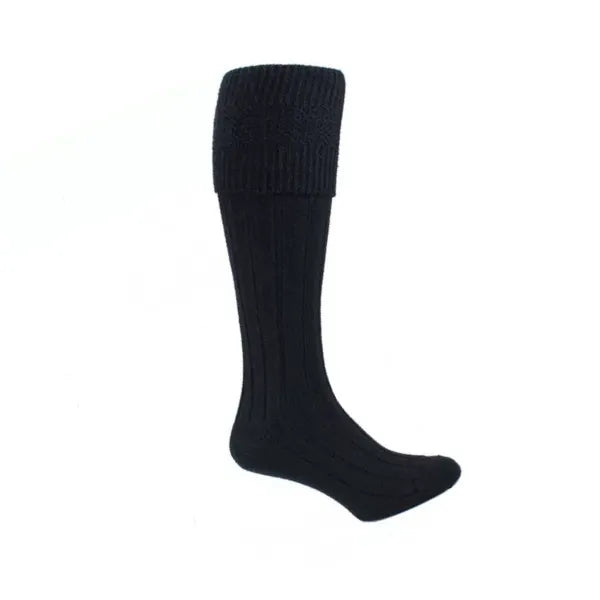
These premium black kilt socks are an essential accessory for anyone looking to complete their traditional Scottish attire with a touch of elegance and comfort. Crafted with 80% wool, these socks offer a luxurious feel, ensuring both warmth and breathability. Their high wool content provides a perfect balance of insulation and moisture-wicking properties, making them ideal for various weather conditions.
IX. Garters and Flashes
Garters hold up the kilt hose, hidden beneath the cuff, while flashes add a splash of color. Flashes, bands of fabric that hang from the garter, often mirror the tartan's colors, creating a cohesive look.
X. Sgian-dubh and Ghillie Brogues
The Sgian-dubh, a small dagger, is tucked into the hose with only the hilt visible, symbolizing trust. Ghillie brogues, with their distinctive lacing, complete the outfit, their design rooted in practicality and tradition.
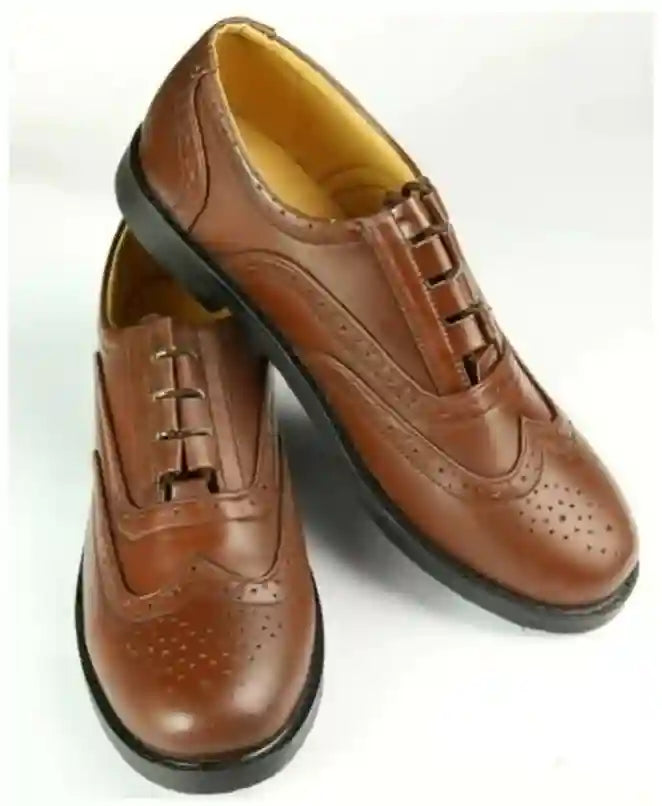
XI. Optional Accessories
To further personalize the ensemble, wearers may opt for additional accessories such as a belt with a decorative buckle, a fly plaid draped over the shoulder, or specific jacket accessories that enhance the outfit's formality and aesthetic appeal.
Formal kilt attire is a testament to Scottish culture's enduring legacy, offering a unique blend of history, tradition, and elegance. Whether attending a wedding, formal dinner, or ceremonial event, the proper assembly and wearing of a kilt outfit pay homage to a rich cultural heritage, ensuring that the wearer not only stands out but also respects the depth and significance of Scottish traditions. Through understanding and appreciating each component of the kilt ensemble, individuals can celebrate and perpetuate the timeless elegance of Scottish formal wear.
